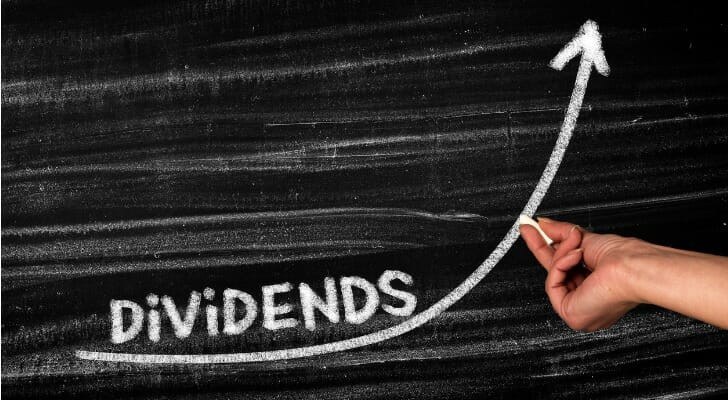 Investing in dividend-paying stocks or ETFs offers the opportunity to generate passive income. If you don’t need this income immediately, reinvesting dividends — using them to purchase additional shares of the same stock or ETF — can be a powerful strategy for compounding growth. Over time, this approach leverages the effects of compounding by increasing your share count, potentially boosting future dividend payouts and capital appreciation without requiring additional out-of-pocket investments. Here’s a closer look at the pros and cons of dividend reinvestment.
Investing in dividend-paying stocks or ETFs offers the opportunity to generate passive income. If you don’t need this income immediately, reinvesting dividends — using them to purchase additional shares of the same stock or ETF — can be a powerful strategy for compounding growth. Over time, this approach leverages the effects of compounding by increasing your share count, potentially boosting future dividend payouts and capital appreciation without requiring additional out-of-pocket investments. Here’s a closer look at the pros and cons of dividend reinvestment.
A financial advisor can help you decide how much, if any, of your dividends you should invest.
What Are Dividends?
Dividends represent a percentage of a company’s profits, paid back to shareholders. In addition to the capital appreciation you could get from owning a stock that rises in value, you can also benefit from dividend payouts. Not all stocks pay dividends to investors, however.
For example, a growth stock is less likely to offer a dividend as the company may reinvest most or all of its profits in growth and expansion projects. At the other end of the spectrum are the Dividend Aristocrats and Dividend Kings. These are established companies that have consistently increased their dividend payouts year to year. Meanwhile, some companies may reduce or eliminate dividend payouts over time if profit margins shrink.
Aside from individual stocks that pay dividends, investors can choose dividend exchange-traded funds. These funds hold a basket of dividend stocks, allowing for simplified diversification and passive investing. Real estate investment trusts or REITs are another dividend option. These investments are required to pay out 90% of taxable income to investors in the form of dividends. You might consider a REIT if you’d like to add real estate exposure to your portfolio.
Pros and Cons of Reinvesting Dividends
When you reinvest dividends, you’re using them to purchase additional shares of stock. The alternative is receiving dividend payouts as cash. The chief advantage of reinvesting dividends is having the opportunity to purchase additional shares of stock without putting up more money out of pocket. Say you own 100 shares of stock that’s trading at $100 per share. This same stock pays a dividend of $5 per share.
That adds up to a $500 dividend payout. You could opt to have that deposited into your brokerage account as cash or have a check mailed to you. However, with dividend reinvestment, you could use that $500 to purchase an additional five shares of the stock.
Reinvesting dividends consistently can increase your portfolio over time through the power of compounding interest. When you’re ready to retire, you can transition from reinvesting dividends to using them as income. And assuming the dividend stocks you hold have increased in value, that would translate to more dividend income.
Of course, dividend reinvestments are taxable as investment income. However, this would also be true if you received any dividend payouts as cash. A potential downside of dividend reinvestment is the potential for a larger tax bill. It is possible to reduce your tax liability if you’re reinvesting dividends inside a tax-advantaged plan, such as an individual retirement account (IRA).
Should I Reinvest Dividends?
 Whether it makes sense to reinvest dividends can hinge largely on your timeline for investing, goals and risk tolerance. If you’re in your 30s, for example, and retirement is still decades away you may not need the income generated by dividends. In that scenario, you could benefit more from reinvesting dividends into additional shares to grow your portfolio.
Whether it makes sense to reinvest dividends can hinge largely on your timeline for investing, goals and risk tolerance. If you’re in your 30s, for example, and retirement is still decades away you may not need the income generated by dividends. In that scenario, you could benefit more from reinvesting dividends into additional shares to grow your portfolio.
Even if the market experiences a downturn, reinvesting dividends could still yield benefits over time through the power of dollar-cost averaging. Using this strategy, you can reinvest dividends to buy additional shares when stock prices are low. Continuing to reinvest dividends can also help you avoid certain investing biases that may cause other investors to sell when volatility sets in.
Reinvesting dividends can also work in your favor if a stock’s dividend payout increases steadily. For example, the Dividend Aristocrats mentioned earlier represent companies that have raised their dividend payout for 25 years or more consecutively. Dividend Kings have raised their dividend payouts 50 years or more consecutively.
Investing in these kinds of companies means you’ll have more dividends to reinvest over time. The more dividends you can reinvest, the more benefits you can draw from compounding.
On the other hand, you may choose not to reinvest dividends if you need them for current income. This is something you may not have to consider until you retire but it’s possible that a job loss or an illness that keeps you from working may necessitate using dividends for income. Or you may want to draw on dividends to help pay for large expenses, such as paying off your mortgage or college expenses.
Using a dividend reinvestment calculator can give you an idea of how much your portfolio might grow if you choose to reinvest. Seeing the numbers and potential growth could help you decide if reinvesting dividends is the right move.
How to Reinvest Dividends
How you choose to reinvest dividends can depend on where you hold your dividend stocks. If you have them inside a taxable brokerage account, for example, your broker may give you the option to set up automatic reinvestments. The advantage of choosing this option is that it’s automatic, so you don’t have to remember to reinvest. And your brokerage may charge no transaction fees or commissions to reinvest dividends this way.
The other option is a dividend reinvestment plan or DRIP. These plans are offered by companies and allow investors to purchase stock directly and reinvest the associated dividends. Similar to reinvesting dividends through a brokerage account, DRIPs offer automated investing, often with little or no transaction fees.
If you’re unsure whether to reinvest dividends through your brokerage or a DRIP, a simple way to decide is by comparing fees. Investment fees can detract from your earnings so the fewer fees you pay for dividend reinvestment, the better. Your financial advisor can walk you through the options to help you choose the best strategy for reinvesting dividend payouts.
Bottom Line
 Should I reinvest dividends? It’s an important question to consider if dividend stocks, dividend ETFs or REITs are part of your investment plan. Over the long term, dividend reinvestment could significantly grow your portfolio, though it’s important to weigh that against your current income needs. The younger an investor is the more it makes sense for that person to reinvest dividends. The older an investor is the more it makes sense to – at least consider – not reinvesting dividends.
Should I reinvest dividends? It’s an important question to consider if dividend stocks, dividend ETFs or REITs are part of your investment plan. Over the long term, dividend reinvestment could significantly grow your portfolio, though it’s important to weigh that against your current income needs. The younger an investor is the more it makes sense for that person to reinvest dividends. The older an investor is the more it makes sense to – at least consider – not reinvesting dividends.
Tips for Dividend Investing
- Consider talking to a financial advisor about how to choose dividend stocks and whether reinvesting dividends is the right approach. Finding a financial advisor doesn’t have to be hard. SmartAsset’s free tool matches you with up to three vetted financial advisors who serve your area, and you can have a free introductory call with your advisor matches to decide which one you feel is right for you. If you’re ready to find an advisor who can help you achieve your financial goals, get started now.
- Planning for retirement can be overwhelming. You can get a good estimate of what you’ll get after you quit working with a retirement calculator.
Photo credit: ©iStock.com/g-stockstudio, ©iStock.com/g-stockstudio, ©iStock.com/undrey